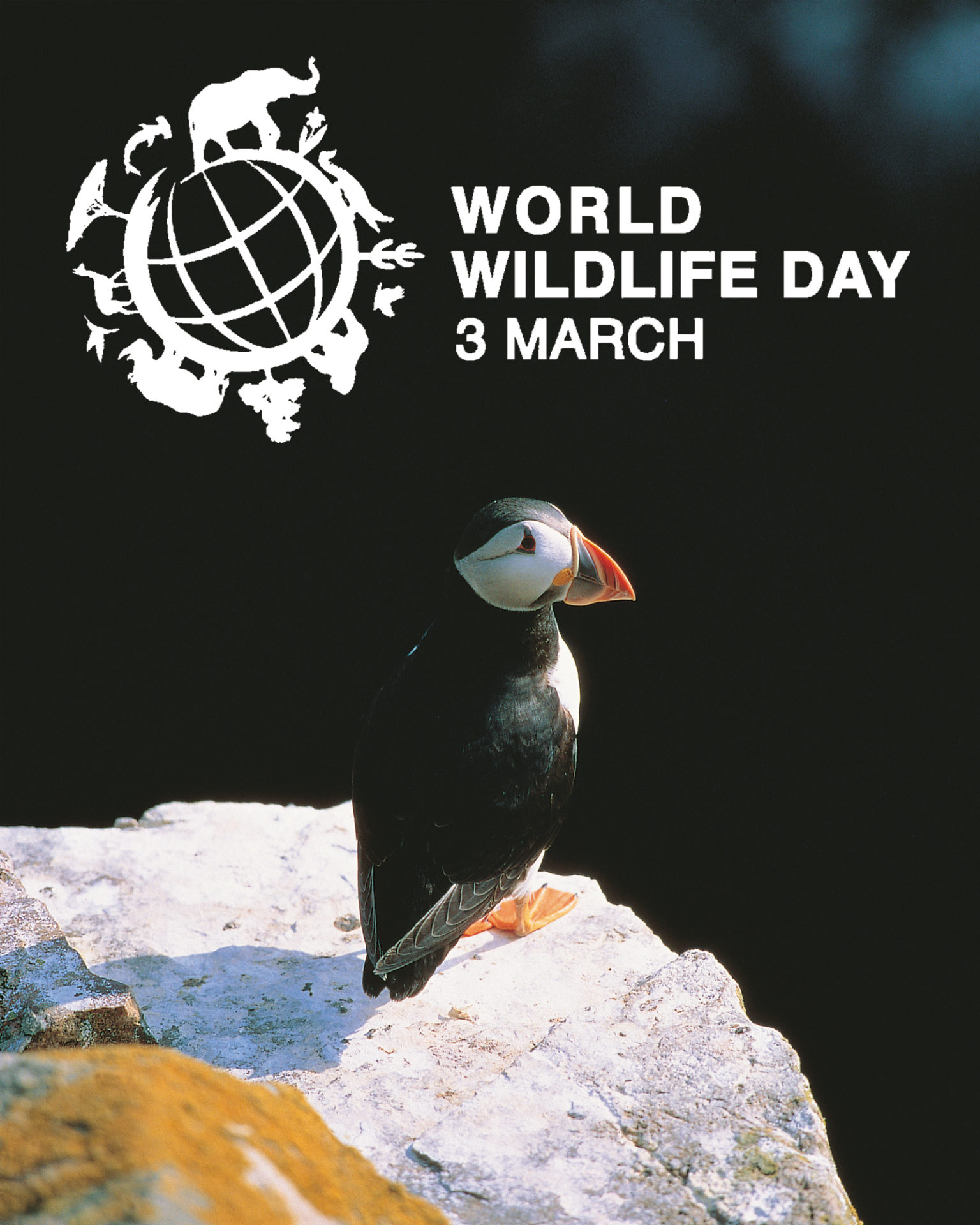In 2013, the UN decided to proclaim the 3rd March as World Wildlife Day. This day was chosen as it was the day when, internationally, the “Convention on International Trade in Endangered Species of Wild Fauna and Flora (CITES, 1973)” was adopted.
Since then, each year has had a different theme – such as “Forests and Livelihoods: sustaining people and planet” in 2021; and “Life below water: for people and planet” in 2019. For 2022, the UN World Wildlife Day is “Recovering key species for ecosystem restoration”.
This theme is to raise awareness of endangered wildlife (both the flora and fauna of our ecosystems), and to highlight the power of conservation efforts seeking to reverse their fate. When this theme was announced in November 2021, it cited the International Union for Conservation of Nature’s Red List of Threatened Species, where over 8,400 species of wild fauna and flora are critically endangered – and close to 30,000 more are understood to be endangered or vulnerable. Based on these estimates, it is suggested that over a million species are threatened with extinction.
Continued loss of species and degradation of habitats and ecosystems threatens humanity as a whole, as people everywhere rely on wildlife and biodiversity-based resources to meet all their needs, from food, medicines and health to fuel, housing, and clothing.
In Ireland, the NPWS and the Northern Ireland Environment Agency work together with national experts and with the National Biological Data Centres North and South to produce regional Red Lists for the island of Ireland. The production of Red Lists is an action under our National Biodiversity Plans. Red Lists are published on an irregular basis, as datasets and the necessary national expertise for taxonomic groups become available. In general in Ireland, the species that are assessed are considered native to Ireland if they have been naturalised in Ireland before 1500.
A quick dive into the most recent of Ireland’s Red Lists show that:
- Of our 27 native mammals in Ireland; one was found to be regionally extinct (grey wolf Canis lupus); one achieved a threat
status of Vulnerable (black rat Rattus rattus); and the remaining 25 were assessed as least concern! Improvements in the status of the red squirrel, Leisler’s bat and the otter were noted. However, there are general concerns about the underlying status of many of the natural habitats on which Irish mammal species rely - Of our 58 cartilaginous fish (sharks, skates, rays and chimaeras); 6 were assessed as Critically Endangered (such as the Portuguese dogfish, the porbeagle shark and the angel shark); 5 species are Endangered (such as the basking shark and the common stingray); and a further 6 species are Vulnerable (including the kitefin shark and the shagreen ray). Of the remaining species, 19 were assessed as Near Threatened and 22 species as Least Concern.
The main anthropogenic impacts on threatened species are over-exploitation by commercial fisheries and habitat destruction and disturbance. While there are no longer any directed fisheries for any threatened cartilaginous fish in Irish waters, threatened species are taken as by-catch in several fisheries, involving both Irish and non-Irish vessels. Similarly, endangered and threatened species that straddle Irish and nonIrish waters are caught by fleets further afield. - Of our 1,211 native vascular plants (most generally known as ferns); 1.2% are now regionally extinct; 8.8% are on the red list; 8.1% are near threatened; and 73.2% are of least concern.
- In our waterways, a number of widespread threats such as water pollution, the spread of invasive species, over‐fishing, unsympathetic river management and climate change are identified as being of concern for all freshwater fish species. The importance of maintaining, or in some cases restoring, suitable conditions for our native fish communities is highlighted
There are positive and negatives in these numbers – it is fantastic to see that our native mammals are improving, with our red squirrels and elusive pine martins becoming ever-more present in our woodlands. And it is also good to learn about which species out there are on our endangered lists, and therefore really need our help.
Now that we know some of the stats behind our flora and fauna, here’s what you can do for their conservation
- Fair Seas are campaigning for a fifteen-fold increase in Ireland’s Marine Protected Areas, with the goals of at least 10% of Irish waters to be designated as ‘Fully Protected’ by 2025 and at least 30% by 2030. Fair Seas aim is to see Ireland, with a renewed appreciation of the ocean, become a world leader in marine protection, giving our species, habitats and coastal communities the opportunity to thrive.
- Invasives.ie is the National Biodiversity Data Centre portal for information on invasive species in Ireland. On their website you can learn which species of plants and animals (land or water based) are invasive with their species identification guides, and you can report sightings.
Currently, we are part of the Check Clean Dry Disinfect Campaign, which is all about learning how to stop the spread of invasive species through the proper cleaning of gear and equipment when we move through different areas. We have a video about it here. - Learn about the Protected Sites in Ireland via the National Park’s and Wildlife Services’ website, where you can explore the areas through specific site codes, on a county basis, or by areas of interest. Through this portal you can explore homes of Ireland’s land mammals; over 400 species of birds; more than 4,000 plant species; and over 12,000 species of insect. If we want all of this to survive, we must ensure that there are enough suitable areas for all these species to flourish.
- Become a member of Leave No Trace Ireland – see the differences we are making here, and our training and events calendar for upcoming educational programmes. Our outdoor ethics education programme is the foundation of Leave No Trace, as we work to help us all better understand our impacts and responsibilities to our amazing environment.

